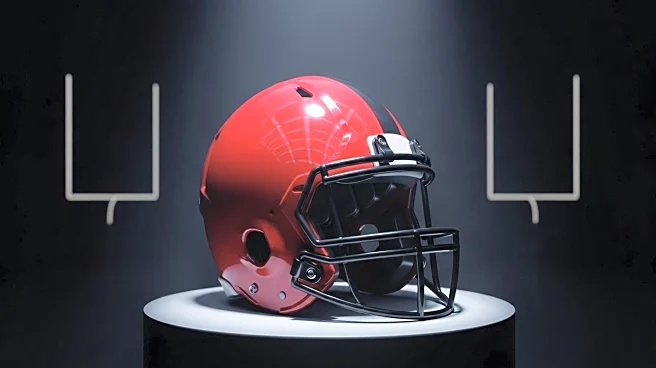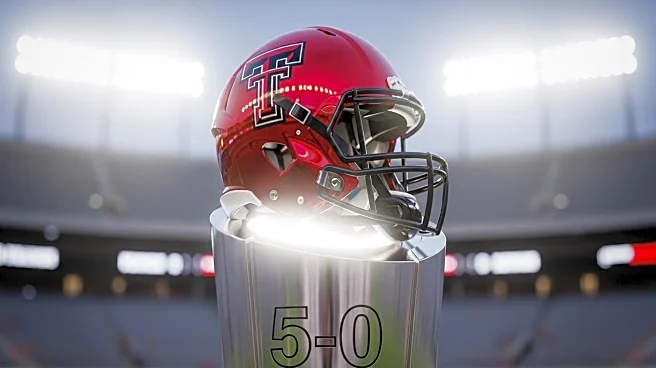What's Happening?
Texas Tech University has introduced a new logo design, sparking varied reactions among its community and college football fans. The updated 'double T' logo, set to be used starting in spring 2026, features a flat design with red and white colors, reminiscent of the school's historical look from the 20th century. This change follows a brand audit conducted with creative agency LDWW and Adidas. Alongside the primary logo, Texas Tech has also released secondary logos, including a new Red Raider look and updated sports-specific marks. The university aims to blend traditional elements with modern design in its new branding strategy.
Why It's Important?
The unveiling of Texas Tech's new logo is significant as it reflects the university's efforts to modernize its brand while maintaining historical elements. This move could impact the university's identity and marketing strategies, influencing how it is perceived by prospective students, alumni, and sports fans. The mixed reactions highlight the challenges institutions face when updating iconic symbols, balancing tradition with contemporary appeal. Positive feedback from fans who appreciate the retro look suggests potential success in engaging long-time supporters, while criticism points to the risk of alienating those who favor more modern aesthetics.
What's Next?
Texas Tech plans to introduce a new branding and style guide in spring 2026, which will further define its visual identity across various platforms. The university may continue to monitor feedback and make adjustments to ensure the new logo resonates with its community. Stakeholders, including students, alumni, and sports fans, are likely to express their opinions, potentially influencing future branding decisions. The reception of the new logo could also impact merchandise sales and the university's overall brand equity.
Beyond the Headlines
The redesign of Texas Tech's logo raises broader questions about the role of tradition in modern branding. As institutions strive to remain relevant in a rapidly changing environment, they must navigate the tension between preserving heritage and embracing innovation. This case exemplifies the cultural and emotional significance attached to logos, which often serve as symbols of identity and pride for communities. The varied reactions underscore the subjective nature of design and the importance of stakeholder engagement in branding initiatives.










